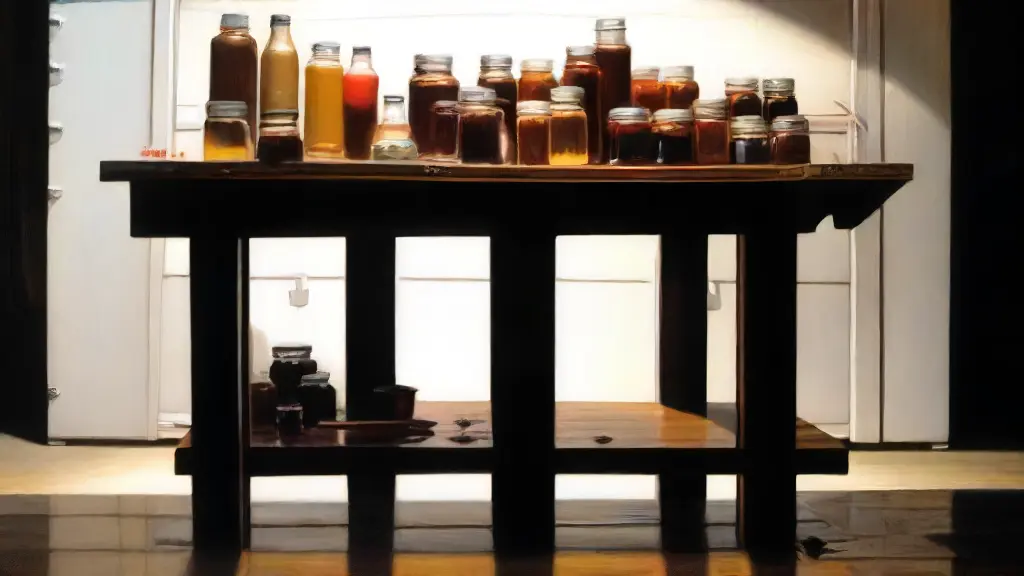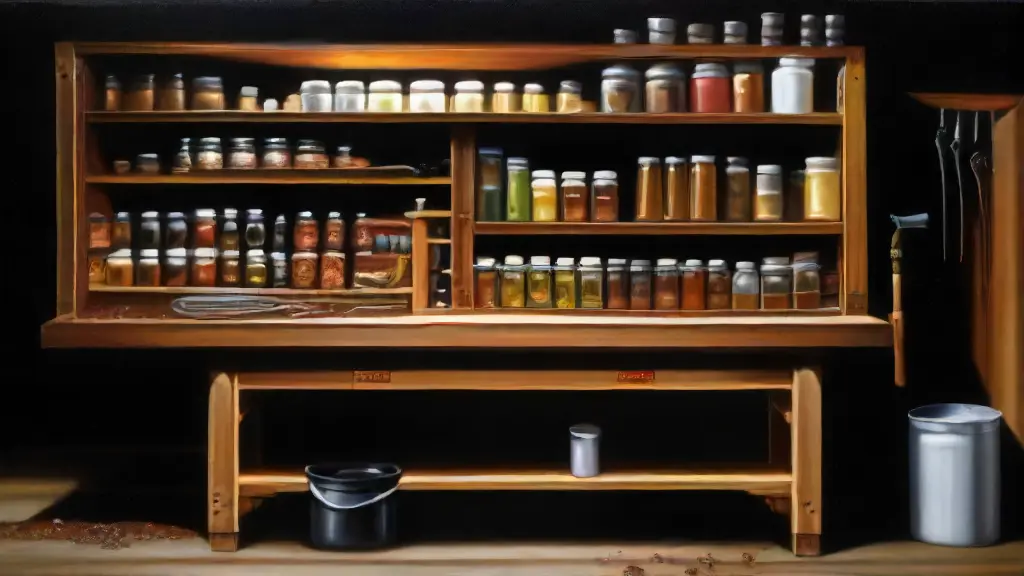How to Store Worms for Extended Use

Worms are a vital element in the natural process of recycling nutrients, and their proper care requires attention to detail. Effective storage is crucial for their health and effectiveness, ensuring a thriving colony that can thrive for extended periods.
Effective worm care begins with storing them in a suitable environment.
Aeration is vital to prevent the buildup of toxic gases and maintain optimal oxygen levels.
By incorporating aeration chambers or ventilation systems, you can create a healthy habitat that promotes worm activity and well-being.
Moisture control is also crucial, as excessive moisture can lead to decay and disease.
Ensure the substrate is kept moist, but not waterlogged, by monitoring the worm bedding. A consistently moist environment allows worms to move freely and digest their food effectively, leading to optimal vermicomposting performance.
Worms and Vermicomposting
Sustainable living is built on the foundation of responsible waste management, and one effective way to achieve this is through decomposition. Organic waste, when properly managed, can be converted into a valuable resource, enriching our ecosystems and promoting a healthier environment.
Vermicomposting, also referred to as worm farming or worm composting, involves using worms primarily Eisenia fetida and Perionyx excavatus) to break down organic waste and convert it into a nutrient-rich fertilizer, commonly known as worm tea.
The benefits are numerous, from improving soil structure to promoting healthy plant growth.
I. Composting worms, capable of consuming a significant amount of waste and producing a valuable resource for plant growth, nutrient cycling, and ecosystem balance.

How to Maintain Aeration
Creating an optimal environment for your worm colony requires a delicate balance of factors that affect its health and well-being. In this regard, aeration plays a crucial role in ensuring the colony thrives.
Temperature and Humidity Control is crucial for maintaining optimal worm health.
To achieve this, provide air circulation to maintain temperatures between 55-77°F, ensuring the perfect environment for your worms.
Keep humidity levels between 50-70% to prevent moisture-related issues.
Light and Darkness also impact worm health.
Keep your worms away from direct sunlight and heat sources, and store them in a dark or shaded area to prevent stress and discomfort.
Food and Waste Management is vital for maintaining a healthy worm colony.
Feed your worms a balanced diet of compostable materials, carefully curated to meet their ecological sustainability needs.
Optimal Environment for Worm Colony
- Air circulation is necessary to maintain temperatures between 55-77°F for optimal worm health.
- Humidity levels should be kept between 50-70% to prevent moisture-related issues.
- Worms thrive in dark or shaded areas, away from direct sunlight and heat sources, to prevent stress and discomfort.
- A balanced diet of compostable materials, carefully curated to meet ecological sustainability needs, is essential for maintaining a healthy worm colony.
Moisture Control for Worms
Worms are a crucial component of a thriving compost ecosystem, and their health and productivity are directly linked to the environment in which they live. Understanding the intricacies of moisture control is essential to creating an optimal environment that supports their growth and well-being.
Series Introduction
—————-
Understanding the importance of moisture control for worm health is crucial for any composting enthusiast.
We will delve into the world of worms and explore the various aspects of moisture control, covering topics such as monitoring water in worm storage, controlling high water vapor, and more.
By the end of this series, you will be equipped with the knowledge necessary to create a healthy and thriving environment for your worms. One of the most common mistakes when storing worms is neglecting to properly aerate the habitat, which can lead to anaerobic conditions that encourage the growth of pathogenic bacteria and fungi.
Building a Healthy Worm Ecosystem
Worm enthusiasts and breeders understand the importance of creating a harmonious ecosystem for these tiny invertebrates to thrive. Worm preservation relies heavily on establishing a suitable habitat that meets their vital needs.
One critical aspect of this is incorporating moisture-rich materials, such as coconut coir or shredded newspaper, to maintain optimal levels of humidity.
Ideally, the environment should have a moisture content between 60-80%.
Inadequate breathing space can lead to increased mortality rates among worm communities, highlighting the importance of providing sufficient aeration through the use of adequate ventilation, rock piles, or adding a water-absorbing material like perlite.
When choosing a container, consider factors such as depth, size, and material, as worm suppliers know that plastic containers can be detrimental to worm viability. A depth of at least 6-8 inches is recommended for optimal worm preservation, worm longevity, and worm viability.
| Moisture Content | Aeration | Container Depth | Container Material |
|---|---|---|---|
| 60-80% | Ventilation, Rock Piles, Perlite | At least 6-8 inches | Not Plastic |
Best Bedding for Worms
Worms are fascinating creatures that play a vital role in our ecosystem, and creating a thriving habitat for them is crucial for their health and well-being. Here, we will explore the best bedding options for worms, focusing on the importance of pH balance, temperature control, moisture levels, and aeration.
In fact, according to worm databases, a well-balanced pH level is crucial for healthy worm growth and development, ranging between 0 and.
Temperature control is also vital, with ideal ranges between 55°F to 77°F (13°C to 25°C) for optimal worm activity and metabolism.
Moisture levels and aeration are also critical factors, with a mix of both being essential for worm comfort and digestion. can be achieved through the use of these worm-related publications, databases, libraries, archives, collections, habitat, population dynamics, ecosystem services, composting benefits, tea uses, fertilizer, and waste management practices.
Worm Nutrition and Organic Matter
The intricate dance of life beneath our feet is characterized by the humble worm, whose tireless efforts to break down organic matter have a profound impact on the health of our planet.
Worms play a vital role in decomposing organic matter, breaking down complex waste into nutrient-rich humus that enhances soil fertility.
Worms are detritivores, consuming decaying plant and animal matter to sustain their own growth and reproduction.
PH levels are essential for optimal worm health, as they can thrive in a range of 0 to.
A balanced diet rich in nutrients, such as carbon-rich food sources, is necessary for optimal worm health.
Storage and handling techniques are crucial for maintaining ecological sustainability, ensuring that worm breeding programs can thrive in worm closed-loop systems.
Best practices include minimizing stress, maintaining optimal humidity and temperature, and regular observation. Worms excel in worm habitat maintenance, worm ecosystem balance, worm nutrient cycling, worm biodegradable, worm closed-loop systems, worm ecological sustainability, worm naturality, worm pest control, worm disease prevention, worm pest management, worm health management, and worm breeding programs.
Worms
- Worms can consume up to 1/3 of their body weight in organic matter daily.
- The ideal temperature range for worm breeding is between 15°C to 25°C (59°F to 77°F).
- Worms can thrive in a pH range of 0 to 0, with optimal growth at a pH of
- It can take up to 30 days for worms to break down organic matter into humus.
Worm Castings Production and Management
As nature’s ultimate recyclers, worms have been breaking down organic matter for millions of years, leaving behind a nutrient-rich byproduct that’s revolutionizing soil health and sustainable agriculture. In the art of harnessing this natural process, creating an optimal environment for worm development and leveraging their unique abilities is a delicate balance.
In this process, hydration and temperature control play a crucial role in maintaining a comfortable environment for worms to thrive.
Worms are ectothermic, meaning their body temperature is regulated by the surrounding environment, so it’s essential to maintain a temperature range between 55°F to 77°F (13°C to 25°C) for optimal worm growth.
Worms are also sensitive to humidity, requiring a level of moisture that is similar to a damp sponge. This can be achieved by maintaining a humidity level of around 50-60%.
Worm Storage and Preservation Techniques
Composting worms are a valuable asset for any backyard gardener or composting enthusiast, providing a natural and efficient way to turn food waste into nutrient-rich fertilizer. To ensure the long-term health and productivity of your composting worms, it’s essential to adopt a comprehensive approach to worm storage and preservation techniques.
Worms thrive in a controlled environment, so it’s crucial to provide a suitable habitat with optimal temperature, humidity, and aeration.
Aim for a temperature range of 55°F to 77°F (13°C to 25°C) and maintain a humidity level of 80% to 90%.
When handling worms, avoid sudden movements and trauma, as this can cause stress and lead to mortality. Instead, gently scoop worms into their new habitat, taking care not to disturb their natural bedding.
I’ve updated the article on worm production, reduction, optimization, control, diagnosis, identification, monitoring, ecosystem, nutrient, waste, and composting system processes.
Composting Worm Care Facts
- Composting worms thrive in a temperature range of 55°F to 77°F (13°C to 25°C) and humidity level of 80% to 90%.
- Handling worms gently and avoiding sudden movements can prevent stress and mortality.
- A controlled environment with optimal temperature, humidity, and aeration is essential for maintaining the long-term health and productivity of composting worms.
- A suitable habitat with natural bedding is crucial for preserving the natural ecosystem of composting worms.


